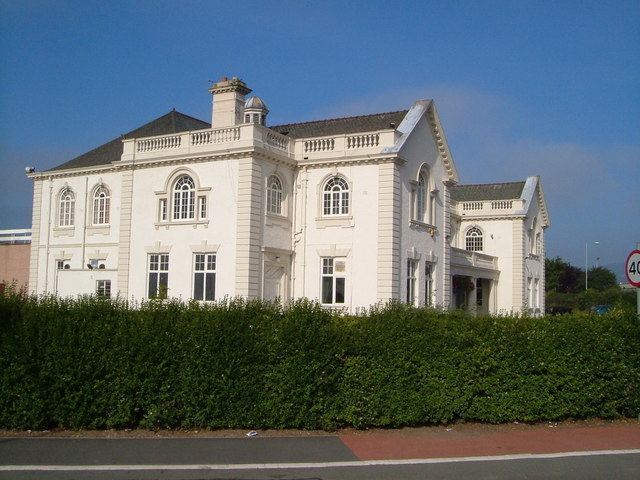Population 4,814 (2011 Census) Community Llay Country Wales Local time Thursday 12:04 PM Dialling code 01978 | OS grid reference SJ334561 Sovereign state United Kingdom | |
 | ||
Weather 11°C, Wind NE at 24 km/h, 64% Humidity | ||
Llay (Welsh: Llai meaning meadow) is a village and local government community, the lowest tier of local government, part of Wrexham County Borough in Wales.
Contents
Map of Llay, Wrexham, UK
It borders several other villages including Gwersyllt and Gresford. At the 2001 Census, the total population of the community of Llay, including Llay village, was 4,905, reducing to 4,814 at the 2011 Census.
Prior to the 1960s, Llay was a coal mining village. Llay Main Colliery, at one time the largest colliery in Wales and after 1952 the deepest pit in the UK, was a major employer for the area before its coal reserves were exhausted in 1966.
History
Llay first appears in mediaeval records as a hamlet - a small settlement without a church - of the township and manor of Burton. It later formed an outlying part of the parish of Gresford, but the relatively late growth of the village is shown by the fact that the first church service was not held there until 1916, and its church was not completed until 1925. Llay was eventually made a separate parish in its own right in 1944.
Much of the growth of the village is connected with the development of coal mines, particularly the Llay Main Colliery. It was first established by the industrialist Sir Arthur Markham in 1913, but sinking of the shafts was interrupted by the First World War and by Markham's death in 1916. The shafts were eventually completed in 1921, and coal production started in 1923. The colliery had a reputation as a well-run, modern pit with a relatively satisfied workforce, and by the 1930s was employing more than 3,000 men, 450 families being installed in new housing schemes in Llay.
Today
There is a country park in Llay called Alyn Waters country park, which has a sister country park in Gwersyllt of the same name. The site includes a children's play park and pathways for pedestrian and cycle access through the forest. There were numerous original artworks around the park such as carved wooden animals along the paths, however many of the artworks have now been stolen or destroyed. There is a small golfing range at the park, and other sporting events take place on the large playing fields, such as football (home of Llay United Youth Football Club) and archery.
There are four churches in the village of Llay; the Roman Catholic St. Francis of Assisi, Llay Community Church of the Nazarene, St. Martin of Tours of the Church in Wales and the Bethel Baptist Church.
There are three drinking establishments, which are the Royal British Legion club, the Crown public house and Llay Miners' Welfare, also known as Miners' Welfare Institute. The Welfare had its grand opening in 1931 after negotiations in 1929 for monies to build a Miners' Institute with sports facilities. The Welfare was refurbished in 2005 after receiving a grant for the work.
There is an industrial estate in Llay, being similar in size to the whole village itself, which it includes a Sharp Electronics factory.
The Llay Resource Centre was opened in 2005 by Chris Armstrong. The Resource Centre features a library, cafe, youth club and runs various courses and groups for the local community.
Community groups
Park CP School Llay – The infant and junior schools were merged in 2008 to form Park CP School Llay which provides education for children from the age of 3 to 11.
Llay United Youth Football Club – Is one of the largest community groups in Llay providing football for over 220 children. The club was started back in 1980 to provide local children organised football against other local teams. In 2011 the club was voted the Welsh FA Community Club of the Year.
Llay Welfare Band - In the early days Llay Welfare Band was connected with Llay Main Colliery. In 1966 the colliery was closed which meant many players having to leave the area and thus the band. In 1967 the band had to be disbanded and all the instruments and equipment were given to the newly formed Point of Ayr Band. In the 1980s Gresford Band found themselves homeless when the N.U.M. office at Watery Road in Wrexham was closed. They were offered practice facilities at the Miners' Institute in Llay. The offer was accepted and Llay Welfare band was reborn. October 2012: Llay Welfare Band continues to practice at Llay Miners' Welfare. The band current members are drawn from surrounding communities, the band has one player who played for the original colliery band. The band has a developing junior section.
